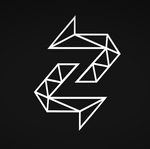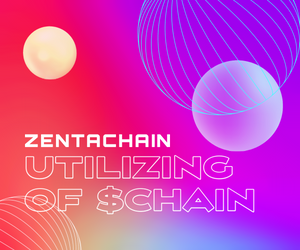As we dive into the dynamic realm of blockchain technology, our focus extends beyond conventional applications. In this section of our blog, we proudly highlight our ongoing efforts in building and developing Zentanetwork, not just as a Layer 2 solution, but as a pioneering platform in the telecom and IoT ecosystem.
Zentanetwork is setting itself apart in the blockchain space by offering an innovative and inclusive platform where other telecom providers can come and build alongside us. This collaborative approach is reshaping how we perceive and interact with blockchain technology, particularly in the realms of telecommunications and IoT.
Our vision with Zentanetwork is to create a robust and scalable platform that is not only efficient and reliable for blockchain applications but also versatile enough to support the burgeoning needs of telecom and IoT infrastructures. By integrating these sectors with blockchain, we are unlocking new possibilities for decentralized communication and smart technology applications.
In this section, we will share our progress, challenges, and breakthroughs in integrating telecom and IoT functionalities into Zentanetwork. Our journey involves not just technological innovation but also the establishment of partnerships and collaborations with other telecom providers. Together, we aim to create a unified, decentralized network that paves the way for next-generation telecom and IoT solutions.
This development marks a significant stride in our mission to not just participate in the blockchain community but to lead and revolutionize it. As we continue to develop Zentanetwork, we invite telecom providers and IoT innovators to join us in this venture. Together, we will build a future where blockchain technology seamlessly integrates with telecom and IoT ecosystems, creating a more connected and decentralized world.
Layer 2 Basics
Layer 2 solutions are designed to alleviate the strain on blockchain networks by moving some processes away from the main chain, offering a more scalable and cost-effective alternative. These solutions enhance transaction throughput and reduce fees, providing a more seamless user experience with different forms of solution.
Such Layer 2 solutions mentioned above are realized in various forms, each designed to address specific scalability challenges while optimizing different aspects of blockchain transactions. Here are some prominent types of Layer 2 solutions, contributing to the evolution of blockchain networks:
- State Channels: State channels enable users to conduct off-chain transactions, where parties can engage in multiple transactions without involving the main blockchain. These channels operate based on smart contracts, ensuring security and transparency. Popularized by projects like the Lightning Network for Bitcoin, state channels minimize on-chain congestion and reduce transaction costs.
- Sidechains: Sidechains are independent blockchains that can interact with the main blockchain, allowing users to transfer assets between the main chain and the sidechain. This approach facilitates faster and more cost-effective transactions since the sidechain can operate with its consensus mechanism. Rootstock (RSK) is an example of a sidechain solution for the Bitcoin blockchain.
- Plasma: Plasma is a framework for creating scalable and secure smart contracts on the Ethereum blockchain. It involves the creation of child chains, or "plasma chains," that can execute transactions off the main chain. These child chains periodically submit a summary of their activities to the main chain, ensuring security and decentralization. OmiseGo and Matic Network are notable projects implementing Plasma.
- Rollups: Rollups are solutions that bundle and optimize transactions before submitting them to the main blockchain. Optimistic rollups and zk-rollups are two main types. Optimistic rollups rely on fraud proofs to ensure the validity of transactions, while zk-rollups use zero-knowledge proofs for enhanced privacy and security. Ethereum Layer 2 projects, including Optimism and zkSync, employ rollup technology.
- Hybrid Solutions: Hybrid Layer 2 solutions combine elements of multiple approaches to offer a comprehensive scalability solution. These solutions aim to provide the benefits of different Layer 2 types while mitigating their individual limitations. An example is the implementation of optimistic rollups with additional privacy features.
Ethereum Historical
In the landscape of Layer 2 solutions, Ethereum stands as the foundational force that revolutionized blockchain technology. Serving as the soil for decentralized applications (DApps) and smart contracts, Ethereum has played a pivot-point role in shaping the way of the entire blockchain ecosystem.
Ethereum overcomes the limitations of its predecessors, particularly in terms of scalability, security, and sustainability. Recognizing the increasing demand for decentralized applications and the challenges associated with scalability on the Ethereum mainnet, the community embarked on a journey to enhance the network's capabilities.
One of its key innovations is the transition from the traditional proof-of-work (PoW) consensus mechanism to a proof-of-stake (PoS) model. This transition brings about transformative improvements in the network's efficiency and significantly reduces its environmental footprint.
The proof-of-stake mechanism replaces the energy-intensive mining process with a more sustainable and energy-efficient approach. Validators are chosen to create new blocks based on the number of cryptocurrency tokens they hold and are willing to "stake" as collateral. This consensus mechanism not only enhances security but also promotes a more eco-friendly operation, aligning with the growing global focus on sustainability.
Ethereum's commitment to continuous improvement is evident in its transition to Ethereum, a major upgrade designed to enhance scalability, security, and sustainability. The move to a proof-of-stake consensus mechanism aims to address current limitations and position Ethereum as a future-proof blockchain platform.
Layer 2 Solution
As the blockchain space continues to evolve, Layer 2 solutions like Optimism, BASE, opBNB are at the forefront of innovation. With a commitment to scalability, cost-effectiveness, and a robust ecosystem, Zentachain is aimed to make a significant impact. Applying a glimpse into a future where Layer 2 solutions redefine the possibilities of decentralized systems.
In the ever-evolving terrain of blockchain advancements, the forefront of innovation is marked by groundbreaking solutions like op-geth within Layer 2. Zentachain stands out with a steadfast commitment to scalability, cost-effectiveness, and the establishment of a robust ecosystem. The platform's potential impact is not to be underestimated, promising to redefine the standards of efficiency and accessibility in blockchain technology.
As Zentachain continues to mature, its strategic focus on scalability positions it as a key player in overcoming the challenges faced by conventional blockchain networks. The emphasis on cost-effectiveness ensures that the benefits of blockchain technology are not only groundbreaking but also economically viable for a broader user base.
In the coming years, observing Zentachain's trajectory will be essential for those seeking insights into the evolving landscape of blockchain technology. The platform's commitment to pushing boundaries and introducing novel solutions positions it as a trailblazer, offering a tantalizing glimpse into a future where Layer 2 solutions redefine the entire fabric of decentralized systems.
Scalability Challenges
Despite its groundbreaking achievements, Ethereum faced challenges related to scalability and transaction costs. As the demand for blockchain applications surged, the network experienced congestion and rising gas fees, prompting the need for innovative solutions. The scalability issues on the Ethereum network became particularly apparent during periods of high activity, such as the popularity of decentralized finance (DeFi) applications and the surge in NFT transactions.
In response to these challenges, Layer 2 solutions emerged as a strategic response to enhance Ethereum's scalability. Zentachain, as a notable Layer 2 solution, addresses these scalability concerns by providing an ecosystem that operates off the main Ethereum chain. By facilitating faster and more cost-effective transactions, Zentachain contributes to mitigating the scalability challenges that have posed limitations on Ethereum's growth. As Ethereum continues to undergo upgrades and improvements, the collaboration with Layer 2 solutions like Zentachain signifies a crucial step toward achieving a more scalable, efficient, and sustainable blockchain ecosystem.
Zentanetwork
Zentanetwork, as part of the broader Zentachain ecosystem, is mentaled for the implementation of Layer 2 solutions to enhance its performance, scalability, and overall efficiency. Here's a comprehensive overview of how Layer 2 can be seamlessly integrated into Zentanetwork:
- Compatibility and Interoperability: Layer2's implementation into Zentanetwork ensures compatibility with existing infrastructure. The interoperability of Layer2 with Zentanetwork protocols and consensus mechanisms allows for a smooth integration process without compromising the existing functionalities of Zentanetwork.
- Scalability Enhancement: One of the primary objectives of implementing Layer2 into Zentamesh is to address scalability challenges. As a Layer 2 solution, it operates off the main chain, relieving congestion and significantly increasing transaction throughput. By leveraging Layer 2, Zentamesh can handle a larger number of transactions, making it an ideal solution for applications that require high scalability.
- Reduced Latency: Layer 2's architecture emphasizes reduced latency in transaction processing. This is particularly beneficial for Zentanetwork, as it ensures quick and efficient communication between nodes within the mesh network. Reduced latency is crucial for real-time applications, such as IoT devices and decentralized applications (DApps), operating on the Zentachain ecosystem.
- Enhanced Security: The integration of Layer2 into Zentamesh contributes to the overall security of the network. Layer2's security features, including encryption and consensus mechanisms, complement Zentamesh's commitment to providing a secure and decentralized environment. This collaboration fortifies the ecosystem against potential threats and ensures the integrity of transactions within the mesh network.
- Smart Contract Functionality:Zentanetwork, with the incorporation of Layer2, gains access to enhanced smart contract functionality. Layer2's support for smart contracts off the main chain allows for the execution of complex and resource-intensive computations without burdening the primary Zentanetwork. This flexibility opens up new possibilities for developers building decentralized applications on Zentamesh.
- Ecosystem Synergy: The implementation of Layer 2 into Zentamesh contributes to the broader synergy within the Zentachain ecosystem. It enables seamless token transfers and interactions between different components of the ecosystem, fostering a cohesive and interconnected blockchain infrastructure.
Ecosystem
Zentachain stands as more than just a Layer 2 solution; it constitutes an entire ecosystem deeply rooted in blockchain innovation. Developers can seamlessly integrate their own tokens, telecommunications networks, and decentralized applications (DApps) with the Zentachain ecosystem, leveraging its scalable infrastructure. This integration empowers projects within the Zentachain ecosystem to operate efficiently on a Layer 2, offering enhanced transaction throughput and reduced latency and save on transaction fee. Zentachain's versatile architecture extends its utility beyond mere token integration, making it a compelling choice for projects in the telecommunications and Internet of Things (IoT) sectors. Additionally this implementation allows non-obstructed performance of enhanced services related to smooth working with amended feathers of Layer 2 allowance. As the blockchain landscape evolves, Zentachain's commitment to providing a comprehensive ecosystem for token development, telecom integration, and Layer 2 functionality positions it as a noteworthy player in the realm of blockchain solutions, catering to a diverse range of industries and use cases.
CHAIN Token
The Zentachain token is called CHAIN token which represents the Zentanetwork, that can be used within the Ecosystem of Zentachain products like Zentalk, Zentamesh, Zentanode and of course Zentanetwork. Tokens can be expected as the core fundamental of Zentachain, where you can use this token to transfer tokens between Zentanodes within the Zentamesh network which is supporting the offline broadcasting transfer method.
Users can also create offline smart contracts and deploy them to our Zentanetwork with a single node device of Zentanode. This CHAIN token is also used to help builders and support builders who want to build with Zentanetwork, in order to grow not only the ecosystem, but also the IoT and Telecom networks (providers) that play a key role in modern foundation.
Conclusion
In conclusion, the implementation of the Layer 2 network marks a pivot-pointed move into evolution of blockchain technology. Zentachain's integration of Layer2 into its ecosystem is a testament to its dedication to resolving scalability challenges and boosting the efficiency of decentralized networks. The incorporation of Layer 2 into Zentanetwork reinforces Zentachain's role as a frontrunner in the blockchain arena. This pioneering approach not only covers critical scalability issues but also lays the way for a more inclusive and accessible blockchain ecosystem. The synergy between Layer2's capabilities and Zentanetwork's infrastructure is handling the industry towards a new age where decentralized applications and transactions can be improved, maintaining both speed and cost-effectiveness.
As we contemplate the progression of blockchain technology, the appliance of Layer2 within Zentanetwork is drawn as a significant milestone, reflecting the industry's relentless drive for enhancement. Zentachain's visionary strategy augments the functionality of its ecosystem and significantly contributes to the overarching narrative of blockchain's and telecom IoT transformative impact.
Recognizing the dynamic nature of decentralized solutions, Zentachain's integration of Layer2 is a crucial step forward. However, in our commitment to excellence and reliability, we have decided to continue developing and refining our technology on the test-net first. This cautious approach ensures that every aspect of Layer2's integration is meticulously tested and optimized within the controlled environment of the test-net. Only upon achieving unwavering stability and performance benchmarks will we transition to deploying these advancements on the main-net.
This methodical and phased approach underscores our dedication to not only meeting but exceeding the expectations set for decentralized technologies. As we forge ahead, the ethos within the blockchain community is exemplified by Zentachain's endeavors, affirming the notion that true innovation is not merely an endpoint, but a continual journey. A journey that meticulously balances innovation with reliability, ensuring that as we unlock the full potential of decentralized technologies, we do so with utmost precision and confidence.
Thank you and Best regards - Zentachain Team!












